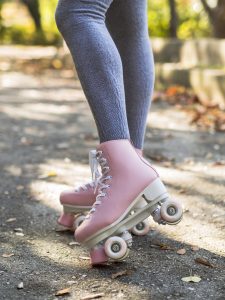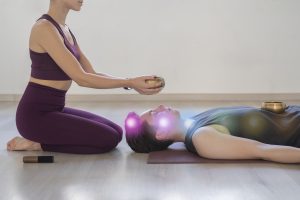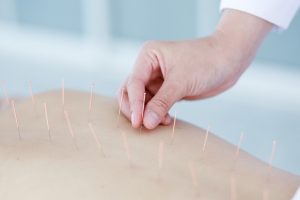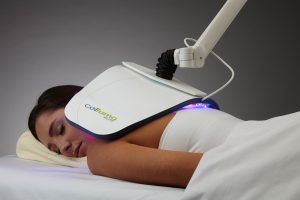Last spring, I fell while roller skating. My feet slipped out from under me, and I landed hard on my butt, instinctively bracing myself with both wrists. A classic wipeout.
The next day, still in shock and running on little sleep, I went to see my doctor. While my low back was sore, I didn’t think it was anything serious. However, I could barely bend my elbows, and my wrists were tender, though I retained some range of motion. It was clear that my elbows had taken the brunt of the fall.
Diagnosis: Broken Elbows, No Surgery
The X-rays confirmed my suspicion—broken elbows. Luckily, they weren’t as severe as fractures in my wrists or shoulders, which would have required surgery or casting. My doctor reassured me that elbows heal through movement and that no immobilization was necessary. Instead, he told me, “Just wait for your body to heal.”
But passively waiting didn’t sit well with me. As an alternative medicine practitioner, I knew there were ways I could actively support my healing process. I decided to take a proactive approach, combining both traditional and alternative therapies to speed up my recovery.
Healing Through a Holistic Approach
Mental Healing: Rest Is Essential
Healing starts from the inside out. The body doesn’t heal when we’re stressed or rushing through life—it heals when we rest. While sleep is vital, I realized that simply going back to my usual routine too quickly would hinder my progress. My body was physically repairing broken bone, and I needed to honor that by prioritizing rest.
I made sure to support my body during the initial days of healing by incorporating a variety of therapies:
- Acupuncture
- Sound Bowl Healing
Additionally, I listened to binaural beats while lying in front of the fireplace for at least 30 minutes, three times a day. This helped me enter a deep state of relaxation and promote healing. By giving myself this level of care early in the recovery process, I knew I was setting the stage for long-term success and minimizing the risk of future complications.
Internal Healing: Supplementation & Remedies
In addition to mental and emotional rest, I focused on internal healing with the following:
- T-Relief: I took one tablet up to five times daily, under the tongue, away from meals and mint. This homeopathic remedy is designed to reduce pain and inflammation, particularly after acute injuries.
- Vitamin D: I supplemented with 5000 IU daily during the first month of recovery, as vitamin D plays a crucial role in bone health and immune function. D3 with Vitamin K is the best form.
- Bone Builder Forte by Metagenics: MCHC is a highly absorbable crystalline compound that provides everything found in healthy bones.
Physical Healing: Active Recovery
Even though I had to scale back my usual activities, I knew it was important to keep my body moving in a way that supported my healing. Here’s what I did:
- Movement: I reduced the intensity of my swimming routine but didn’t stop altogether. Gentle movement, even at a slower pace, helped keep blood flowing to the injured areas.
- Hot Tub Therapy: I spent time in the hot tub with my elbows near the jets, using the warm water to promote circulation and reduce stiffness.
- Acupuncture: For injury recovery, acupuncture was essential in getting my body out of “fight or flight” mode and into healing mode. The tiny needles stimulate microcirculation, which accelerates the recovery process.
- Light Therapy (Celluma Laser): I also incorporated Low-Level Light Therapy (LLLT), which uses specific wavelengths of light to improve cellular performance. Light therapy has been shown to:
- Increase blood flow
- Reduce inflammation
- Stimulate collagen production
- Accelerate tissue repair
The Celluma Laser, an FDA-cleared device based on NASA research, delivers blue, red, and near-infrared light energy to promote healing by stimulating cellular activity and supporting the body’s natural repair processes.
Two Weeks Later: Results Beyond Expectations
When I returned to my doctor for a follow-up two weeks later, he was impressed with my progress. He said, “You’re healing faster than most of my patients! You’ve regained more range of motion in two weeks than some people do in a month. What did you do?!”
It was a reassuring moment, confirming that my holistic approach was working. But I didn’t stop there. I asked my doctor how long the bones would take to fully heal and put that information on my calendar for the next 12 weeks. This served as a constant reminder to prioritize recovery and avoid rushing back into a hectic lifestyle.
The Importance of Patience and Proactive Healing
In the end, the journey wasn’t just about “waiting” for my body to heal. It was about being an active participant in my recovery, using a combination of traditional and alternative therapies to support my body at every stage.
While it’s tempting to push through pain or return to our normal routines too quickly, I learned that recovery requires patience, rest, and intentional care. By honoring the healing process early on, I set myself up for a stronger and more complete recovery.
Taking Control of Your Healing Journey
No matter the injury, you can take control of your healing process. Whether you’re dealing with a broken bone, muscle strain, or another injury, consider incorporating a holistic approach that includes both medical care and self-care practices. Rest, movement, and the right supplements and therapies can all play a crucial role in your recovery.
By committing to this process, you’re not just waiting for time to heal you—you’re actively supporting your body’s natural ability to heal itself.






Leave a Reply